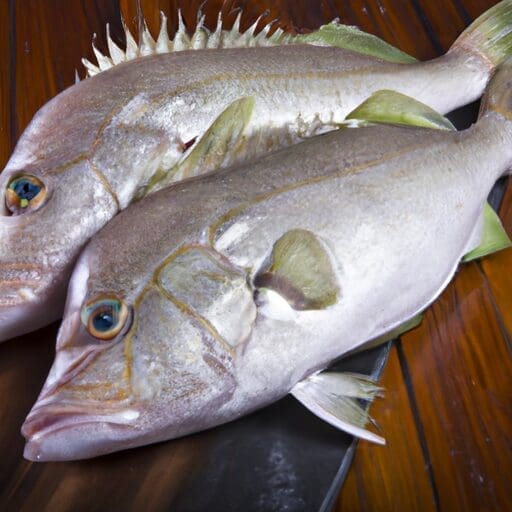Tilefish, scientifically referred to as Lopholatilus chamaeleonticeps, are remarkable marine species belonging to the Malacanthidae family.
Conservation Status
Currently, the conservation status of tilefish is classified as ‘least concern’ owing to their widespread distribution and population, which exhibits no apparent signs of significant decline. Conservation efforts remain integral to maintain the population. These primarily involve responsible fishing practices and habitat conservation.
Statistics
| Statistic | Average | Range |
|---|---|---|
| Length | 38 inches | 20-49 inches |
| Weight | 20 pounds | 5-50 pounds |
| Average Lifespan | 15 years | N/A |
Distribution
Tilefish live primarily in the western Atlantic regions, traversing from Nova Scotia to the Grand Banks and down to the Gulf of Mexico. Some species also dwell in the Pacific off the coast of California. These fish don’t typically exhibit migratory patterns, preferring to stay in deep-water homes.
Habitats
Tilefish inhabit deep waters usually at depths of 250 to 1200 feet. They prefer a temperature range between 8-14℃ and are often found near continental slopes and muddy sea bottoms.
When and Where to See
Tilefish could be seen year-round in their habitats, although seasonal patterns influencing visibility and population density are not fully understood. They’re often spotted during daylight hours near continental slopes.
Best Fishing Locations
Tilefish can be found at various locations including:
- The outer banks of North Carolina
- Gulf of Mexico
- Continental slopes off Virginia
- Northeast Coastal areas of Florida
- Waters off Rhode Island
- Coasts of Nova Scotia
- Grand Banks
How to Catch
Tilefish are bottom feeders and can be caught using baits like squid, mackerel, or herring. The most effective fishing techniques include bottom fishing and deep dropping. The best time to catch tilefish is during daylight hours when they are active.
Identification Guide
Tilefish are unique in their coloration, generally being bright blue, rose, and yellow. They feature a high, fin-like dorsal crest on their heads and have long, slender bodies. Unlike their kin, tilefish lack the large scales that are characteristic of other fish species.
Culinary Profile
Tilefish are prized for their mild, sweet-flavored flesh which is firm yet tender. They’re low in fat, high in proteins, and a rich source of essential nutrients like Vitamin B12 and Selenium. Tilefish can be baked, sautéed, broiled, or grilled and works well in recipes requiring a firm, mild white fish.
Additional Information
Tilefish are solitary creatures that tend to construct burrows in the muddy seafloor. These burrows provide protection against predators like sharks and larger fish species. Historically, tilefish have been recognized for their uniquely colorful bodies, exceptional taste, and elusiveness, making them a coveted prize for recreational and commercial fishing.

